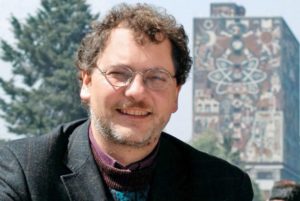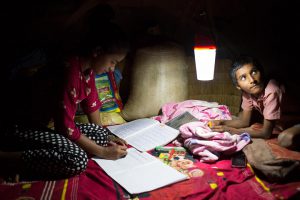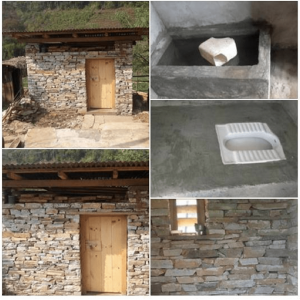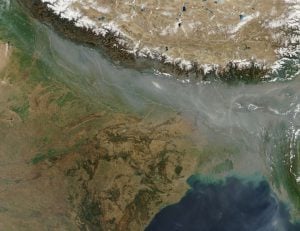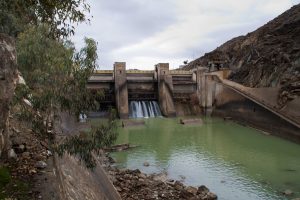Poor nations need money to move to a greener economy and to deal with the impacts of climate change. The industrialised world was on its way to mobilising USD 65 billion in public financing by 2020 for this purpose, a recent OECD report commissioned by the governments of Britain and Australia has said. They are committed to mobilising USD 100 billion through public and private financing per year by 2020.
Last year, OECD, a club of rich nations, reported that economically developed countries had already mobilised USD 62 billion through public and private financing, a number that is hotly contested by developing countries. They accused OECD of counting twice and trying to pass off development aid as climate finance.
Now the UN Framework Convention on Climate Change (UNFCCC) has said that its member countries have reported climate-specific finance flows that totalled USD 25.4 billion in 2013 and USD 26.6 billion in 2014.
Speaking at a facilitative dialogue on climate action before 2020, Carlos Fuller, chair of UNFCCC’s Subsidiary Body for Scientific and Technological Advice (SBSTA), reported to delegates gathered for the November 7-18 climate summit in Marrakech, Morocco, that of this amount, “USD 23.1 billion in 2013 and USD 23.9 billion in 2014 was channelled through bilateral, regional and other channels.” This was a 50% increase over public finance reported through the same channels in 2011-12, Fuller said.
Divergent numbers
Such widely divergent figures are holding up an overall agreement in Marrakech, though an innocuous Marrakech Action Proclamation on the need to combat climate change by implementing the Paris Agreement has been agreed upon. As for the finance, there is no agreement on even a roadmap about when and how the money will be given.
There are problems with the Adaptation Fund as well. This fund was set up with a 2% tax on money received by selling carbon emissions. Now that the carbon market has collapsed, the fund is bankrupt.
Industrialised countries say the tax was under the Kyoto Protocol, which effectively ends in 2020, so the fund should die with it, and the money needed for adaptation to climate change impacts should come from the Green Climate Fund (GCF), which has a mandate to allot at least 50% of its money to adaptation projects.
Developing countries say they need to have a separate fund dedicated to adaptation, and this should move under the umbrella of the Paris Agreement in 2020. There is no agreement yet.
Developing countries have also sought USD 80 million over the next three years to keep the Adaptation Fund alive till then. Elina Bardram, chief climate negotiator of the European Union, said she expected developed countries to pledge at least USD 75 million for this purpose very soon.
Conflict over agriculture
The other big point of conflict has been agriculture. Industrialised countries have been insisting that any mention of agriculture and climate change should deal only with mitigating greenhouse gas emissions. Developing countries are equally insistent that this section must deal with adaptation, since millions of farmers around the world are suffering the impacts of climate change.
With no agreement in sight, the entire section on agriculture was removed from the list of decisions being taken in Marrakech. B.E.E. Molewa, South Africa’s environment minister, expressed her acute unhappiness over this development and hoped that the matter would be discussed again in future.
Big deals ready
Despite these problems, this summit has reached agreement on key issues such as a timetable to implement the Paris Agreement, forestry, green technology transfer and a plan on how to start to deal with the loss and damage already being faced worldwide due to climate change.
The deals have been reached despite the Marrakech summit being affected by the threat that US president-elect Donald Trump would announce that he would pull his country out of the Paris Agreement, which obliges all countries to control their emissions of greenhouse gases (GHG) that are heating up the atmosphere.
Asked how he reacted to Trump’s election victory and its effect on the global climate regime, Anil Madhav Dave, India’s Minister for Environment, Forests and Climate Change, said he would prefer to “wait and watch”.
“Coming from the largest democratic country which always goes for elections in five years, we know the test of results,” Dave said. “Power comes and goes and whatever we speak in the election campaign, it’s somewhat very different from when we come to power… The world is going ahead with Paris Agreement.”
Old problem
Apart from the new Trump problem, UN climate summits have long been bedevilled by an axiom – “nothing is agreed till everything is agreed.” If talks over a finance roadmap remain unresolved, deals on other issues may unravel as well.
Another possible obstacle is the reluctance of many rich nations to ratify a 2012 amendment to the Kyoto Protocol, because ratification will oblige them to reduce their GHG emissions right now. The Paris Agreement comes into force only after 2020.
Speaking at a facilitative dialogue on pre-2020 action, India’s senior climate negotiator Ravi Shankar Prasad demanded that all countries ratify the 2012 amendment by April 2017. There was no response from any representative of any rich country.
Instead, almost all industrialised countries queued up to pledge financial support to a project by the Global Environment Facility (GEF) to build capacity in poor nations for more transparency on how they use the money they get. The pledges totalled up to over USD 50 million. The GEF is not under the aegis of the UN Framework Convention on Climate Change (UNFCCC). It is largely controlled by donor countries.
There was no fresh pledge to support the Green Climate Fund, which is under the UNFCCC and has equal representation from developed and developing countries. The GCF is supposed to be the main repository of the USD 100 billion that rich nations have promised from 2020. So far, it has started projects worth USD 1.2 billion.
Funding reluctance
The reluctance of rich nations to provide significantly more finance through the GCF has become clearer at the Marrakech summit. Instead, they have given a lot more money for the World Bank’s Climate Investment Fund. The fund is expected to touch USD 29 billion by 2020, and will surely be counted as part of the USD 100 billion commitment.
In Marrakech, many rich nations also started an NDC partnership, which is meant to finance developing countries improve their ability to implement their Nationally Determined Contributions (NDC) that form the bedrock of the Paris Agreement. Once again, this will be outside the control of the GCF and therefore of UNFCCC.
The US has been moving in the same direction. The US-India Clean Energy Finance Facility now has a corpus of USD 20 million, which the Overseas Private Investment Corporation (OPIC) of the US is using to fund project preparation by solar power entrepreneurs in India. Josh Bushinsky of OPIC said he expected this would “unlock USD 400 million in long term debt financing” for rooftop solar projects in India.
But money from bilateral projects may not be enough. Gireesh Shrimali of the Climate Policy Initiative, a think tank, said India’s plan was to generate 40-45 gigawatts of power through rooftop solar installations by 2022, but this would need around USD 200 billion, and current analysis showed India was still 30% short of this number.


